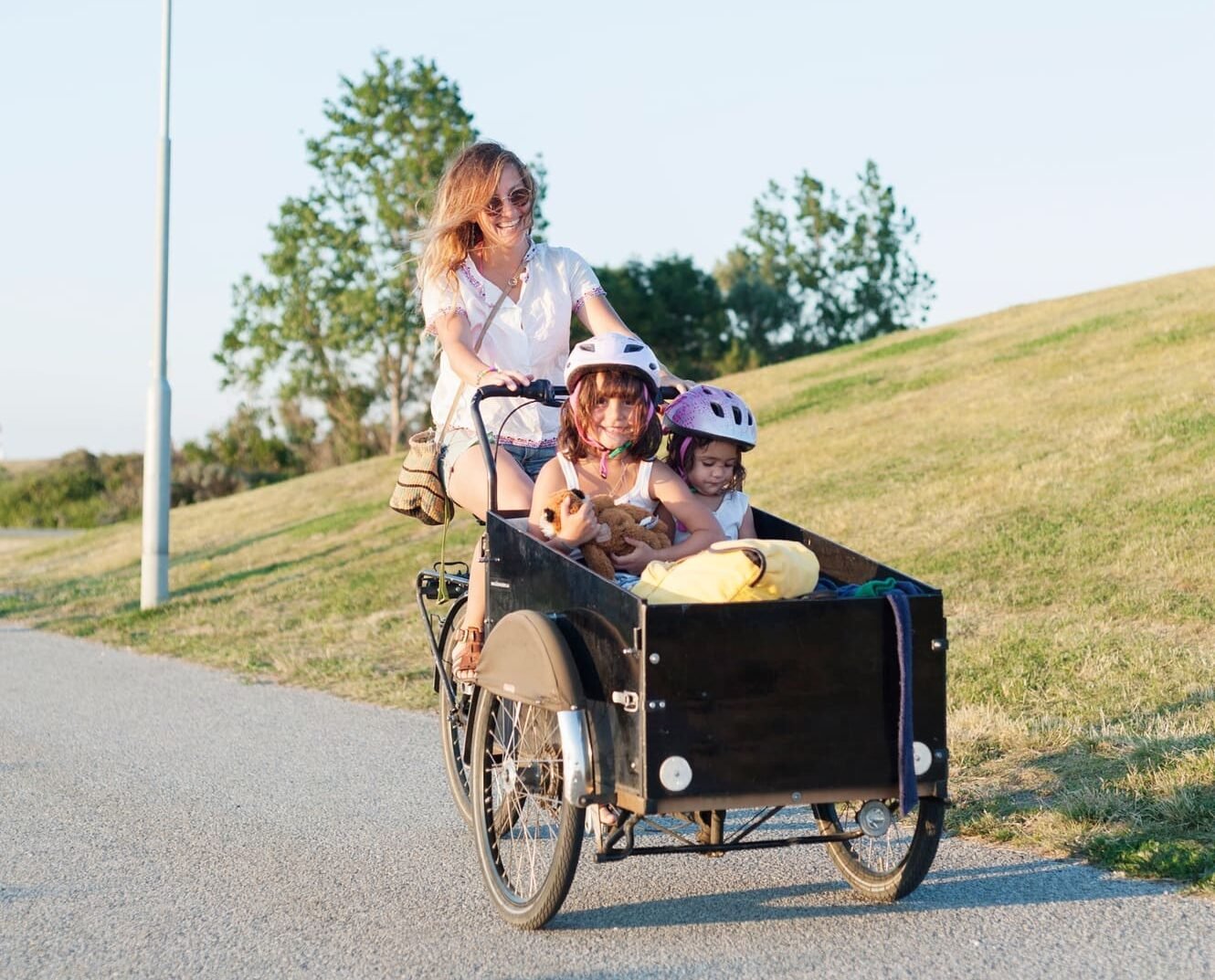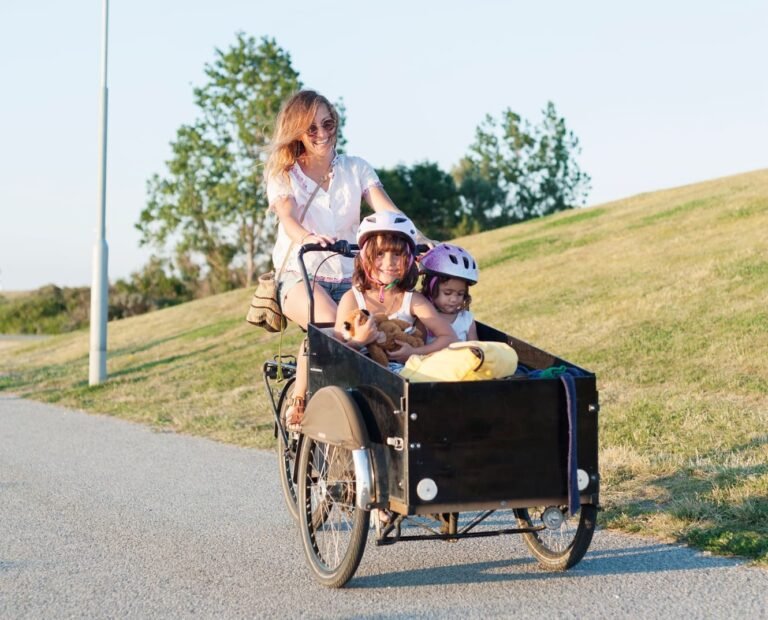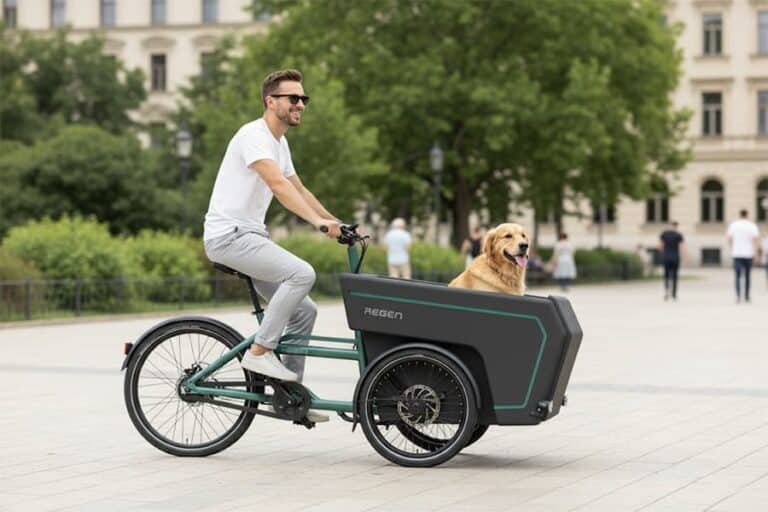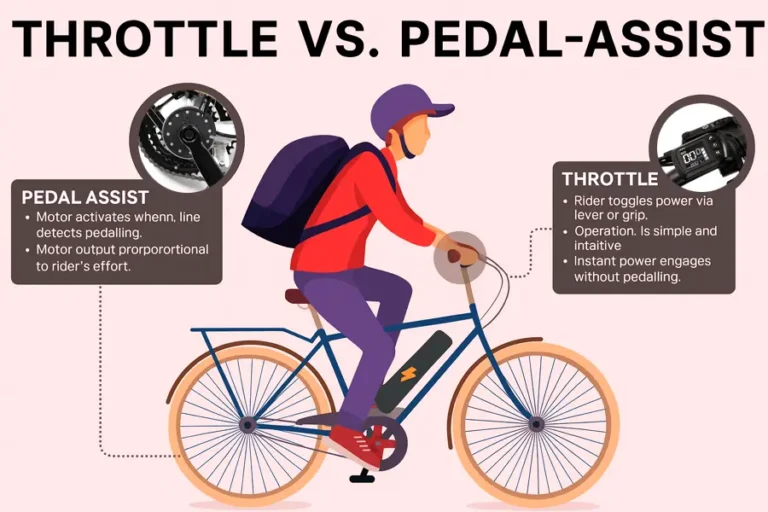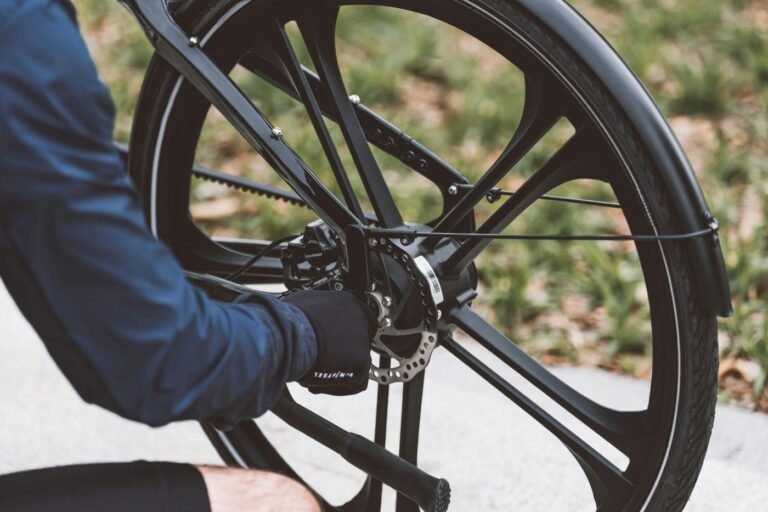Introduction: Why IP Ratings Should Be on Your Radar
At Regen, we are often asked: “Is this e-bike waterproof?” ή “Can it handle rainy commutes?” These questions usually point back to one technical standard—IP ratings.
For e-bikes, the IP rating is not just a detail on the spec sheet. It’s a direct indicator of how well the motor, battery, controller, and other electrical components are protected against dust and water ingress. For buyers, distributors, and OEM partners, understanding these ratings is essential to ensure safety, durability, and compliance with international standards.
In this article, we explain what IP ratings mean, why they matter for e-bikes, how to interpret the numbers, and what to look out for when sourcing or specifying an electric cargo bike.
What Are IP Ratings?
IP (Ingress Protection) ratings are defined under the international standard IEC 60529 / EN 60529. They classify the degree of protection an electrical enclosure provides against the intrusion of solid objects (dust, dirt, tools) and liquids (rain, splashes, immersion).
The format is simple: IPXY
- X = dust/solid protection (0–6 scale)
- Y = water protection (0–9 scale)
For example, an IP54 e-bike motor means:
- “5” → Protected against limited dust ingress (not fully dust-tight, but resistant to harmful accumulation).
- “4” → Protected against water splashes from any direction.
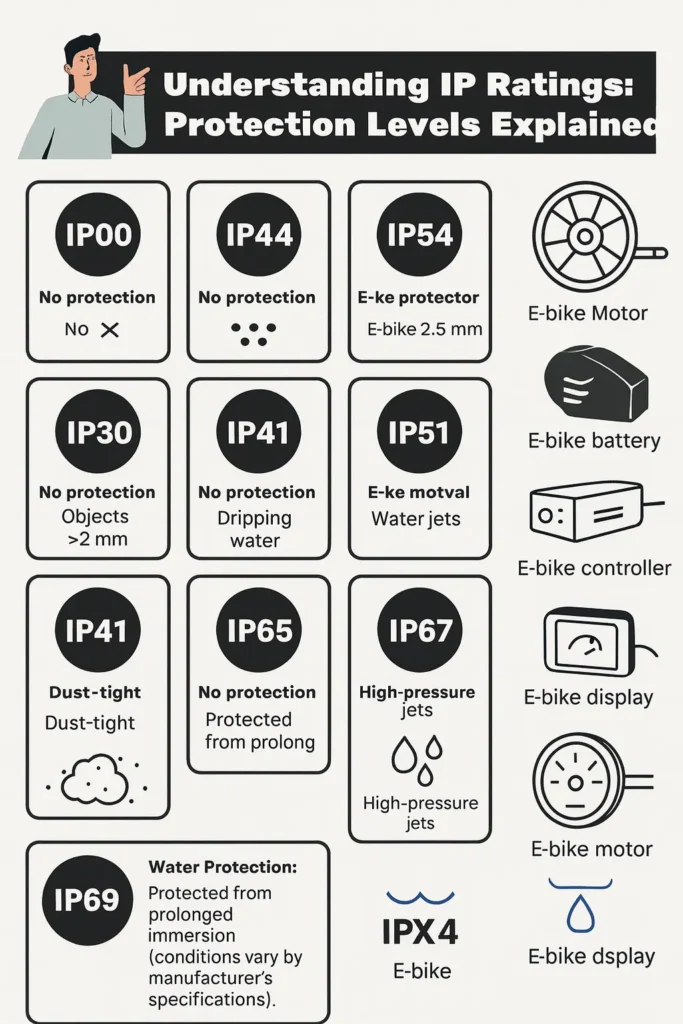
Why Do IP Ratings Matter for E-Bikes?
Unlike indoor electronics, e-bikes face variable, harsh outdoor environments:
- Rain and wet roads → Water ingress can short-circuit controllers.
- Dust, sand, and mud → Can damage bearings, sensors, or cause overheating.
- High-pressure washing → May force water inside housings if ratings are low.
For e-bikes used in last-mile logistics, postal services, or family transport cargo bikes, reliability in all weather conditions is not negotiable.
Key Risks Without Proper IP Protection:
- Motor failure if water infiltrates windings or bearings.
- Battery safety hazards if moisture reaches cells or BMS (battery management system).
- Reduced lifespan of connectors and displays due to corrosion.
- Invalidated warranty when improper water exposure occurs.
IP Rating Breakdown: Dust and Water Protection Levels
Dust / Solid Particle Protection (First Digit)
| Digit | Protection Level | Example for E-Bikes |
|---|---|---|
| 0 | No protection | Unsafe for outdoor use |
| 1 | >50 mm (large objects) | Accidental hand contact only |
| 2 | >12.5 mm | Fingers |
| 3 | >2.5 mm | Tools, thick wires |
| 4 | >1 mm | Small tools, most wires |
| 5 | Dust-protected | Dust may enter but won’t harm |
| 6 | Dust-tight | Complete protection |
Water Protection (Second Digit)
| Digit | Protection Level | Example for E-Bikes |
|---|---|---|
| 0 | No protection | Not suitable outdoors |
| 1 | Dripping water (vertical) | Light condensation only |
| 2 | Drips at 15° angle | Minimal resistance |
| 3 | Spray up to 60° | Rain at angles |
| 4 | Splash from any direction | Standard commuter use |
| 5 | Low-pressure jets | Typical cleaning |
| 6 | Powerful water jets | Heavy rain, roadside wash |
| 7 | Temporary immersion (≤1 m) | Safe in flooded streets briefly |
| 8 | Continuous immersion (>1 m) | Sealed systems, rare in e-bikes |
| 9K | High-pressure, high-temp jets | Industrial vehicles, uncommon |
Common IP Ratings in E-Bikes
Most mainstream e-bikes fall into the IP54–IP65 range. Here’s what they mean:
- IP54 → Entry-level, splash and dust resistant. Common in budget commuter e-bikes.
- IP55 → Resistant to rain and some hose spray. Standard for many mid-range systems.
- IP65 → Dust-tight, protected against water jets. Ideal for delivery or cargo bikes in urban rain.
- IP67 → Dust-tight, immersion resistant up to 1 m. More common in premium motors and batteries designed for off-road or logistics.
IP Ratings and Regulatory Context
Στην Ευρώπη, EN 15194:2017 (EPAC standard) και EN 17860 (cargo bikes) reference IP ratings as part of conformity assessment. While the standard does not always demand a specific IP number, manufacturers must prove safety and reliability under typical use conditions—including rain, puddles, and dust exposure.
For distributors and importers, checking the Declaration of Conformity (DoC) and associated test reports is critical. If a product claims IP67 protection but cannot prove certification, liability risks increase.
Σενάρια πραγματικού κόσμου
- Urban commuter in northern Europe → Needs at least IP54 to ride in drizzle without constant failures.
- Postal delivery cargo bike → Should be IP65 or higher since it faces daily outdoor exposure.
- Off-road mountain e-bike → Benefits from IP67, ensuring mud, river crossings, and washing do not affect performance.
- Family cargo bike for school runs → IP55 recommended to protect displays and controllers from sudden rain.
Choosing the Right IP Rating: Practical Advice
- Ask for test certificates (IEC 60529 or EN 60529 compliance).
- Match the IP level to the intended market (Scandinavia vs. southern Spain have very different demands).
- Balance cost and need → Higher IP (e.g., IP67) requires more sealing and testing, which adds cost.
- Consider connectors separately → A bike may advertise IP65 motor protection, but the connectors might only be IP54.
- Εκπαίδευση των τελικών χρηστών → Even IP67 e-bikes should not be pressure-washed directly at the motor housing.
Example: IP65 Cargo Bike Motor
At Regen, when specifying cargo e-bikes for logistics operators, we often recommend IP65-rated mid-drive motors. Why? Because:
- They withstand daily rain exposure in northern European climates.
- They prevent dust accumulation in city environments.
- They allow operators to perform standard hose cleaning without risk.
This balance avoids overengineering (IP68 would raise costs unnecessarily) while guaranteeing reliability.
Pros and Cons of Higher IP Ratings
Πλεονεκτήματα
- Better protection in harsh environments
- Longer lifespan of electronics
- Lower aftersales repair costs
- Stronger appeal to professional buyers
Μειονεκτήματα
- Increased cost due to sealing and testing
- More complex repair procedures (sealed units harder to service)
- Risk of “over-promising” waterproofing to end-users
How OEM and ODM Buyers Should Approach IP
As an ODM/OEM cargo bike supplier, we at Regen always advise procurement managers to:
- Define use cases first (city commuters vs. postal fleet vs. cargo delivery).
- Compare across suppliers—IP ratings are sometimes loosely claimed without real testing.
- Request transparent documentation—legitimate suppliers provide EN 60529 test reports.
For long-term partnerships, this ensures compliance, warranty protection, and user safety.
Conclusion: IP Ratings Are More Than Numbers
An IP rating is not simply a marketing claim—it’s a technical assurance of durability and safety. For e-bikes, where electronics and outdoor exposure meet daily, these ratings can mean the difference between smooth operation and costly downtime.
At Regen, we integrate IP considerations into every cargo bike project, ensuring that the chosen protection level matches the intended usage environment. Whether you are sourcing for postal fleets, last-mile delivery, or family transport, we recommend you always check the IP ratings and their certifications.
Looking for a reliable cargo e-bike with the right IP protection for your market? Our engineering team at Regen can guide you through motor selection, battery sealing, and compliance documentation.
[Contact us today] to discuss your project.
Αναφορές
- International Electrotechnical Commission. (2013). IEC 60529: Degrees of protection provided by enclosures (IP Code). IEC.
- European Committee for Standardization. (2017). EN 15194:2017 Cycles — Electrically power assisted cycles — EPAC Bicycles. CEN.
- European Committee for Standardization. (2022). EN 17860 Cargo Bikes and Trailers. CEN.


